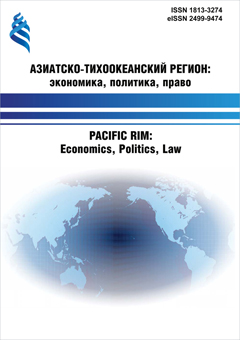Evolution of the doctrine of historical rights to maritime spaces from antiquity to the adoption of the UN Convention on the Law of the Sea of 1982
DOI:
https://doi.org/10.24866/1813-3274/2025-2/207-220Keywords:
historic waters, historic rights to maritime spaces, historic title, gulfs, territorial seaAbstract
The doctrine of historical rights to maritime spaces developed from the search for a balance between bourgeois ideas about freedom of navigation, dating back to ancient Roman jurisprudence, and the pragmatic interests of states in exercising control over key water areas in order to ensure national security, stemming from feudal law. The establishment in international customary law of strict geographical criteria determining the width of the territorial sea gave rise to the need for states to substantiate their claims to bays and closed seas that do not fit into the framework of such criteria. In the first half of the 20th century, the doctrine and international judicial practice developed an understanding of a clear legal distinction between ‘customary’ or ‘legal’ gulfs, with an entrance width not exceeding twice the width of the territorial sea, and historic gulfs, the possession of which is based on the consolidation of the historic title to the water area, and a tendency towards a broader understanding of historic rights to maritime spaces not limited to the exercise of sovereignty.
Codification efforts by states in the second half of the 20th century made it possible to identify the most relevant doctrinal criteria proving the existence of historic rights to water areas – effective control over water space, prescription of possession and the consent of foreign states. Nevertheless, the authors of the 1982 UN Convention on the Law of the Sea deliberately left these issues in the sphere of customary regulation. For this reason, an analysis of the evolution of the doctrine of historic rights is necessary for the most complete understanding of this legal structure.
Downloads
References
1. Мэхэн А. Т. Влияние морской силы на историю 1660–1783. СПб.: Terra Fantastica, 2002. 634 с.
2. Колодкин А. Л., Гуцуляк В. Н., Боброва Ю. В. Мировой океан. Международно-правовой режим. Основные проблемы. М.: Статут, 2007. 637 с.
3. Аббаслы Г. А.-о. Международно-правовые проблемы разграничения морских пространств: дис. ... канд. юрид. наук: 12.00.10. М., 2008. 178 с.
4. Молодцов С. В. Международное морское право. М.: Междунар. отношения, 1987. 272 c.
5. Гроций Г. О праве войны и мира: Репринт с изд. 1956 г. М.: Ладомир, 1994. 868 с.
6. Путешествия Христофора Колумба: дневники, письма, документы. М., Географгизиздат, 1961. 515 c.
7. Tani I. Historic waters: the everlasting anomaly of the Law of the sea // International Journal of Marine and Coastal Law. 2024. No. 39 (2). Р. 279–321.
8. Gillis R. J. Chapter V. Navigational servitudes: parallels historic waters, cases, conferences & publicists // Navigational Servitudes. Leidenherlands: Brill., 2007. P. 205–265.
9. Gioia A. Historic titles. Max planck encyclopaedia of Public International Law. 2013. URL: https://opil.ouplaw.com/display/10.1093/law:epil/9780199231690/law-9780199231690-e705.
10. Международно-правовая квалификация морских районов в качестве исторических вод (теория и практика государств) / под ред. А. Н. Вылегжанина. М.: МГИМО-Университет, 2012. 112 с.
11. Kamiński T. The legal status of historic bays in the light of the works of the League of Nations committee of experts for the progressive codification of international law // Journal of the History of International Law / Revue d'histoire du droit international. 2022. No. 24 (1). Р. 36–61.
12. Соколова Е. Л. Институт исторических вод в современном международном праве: дис. ... канд. юрид. наук: 12.00.10. М., 2015. 149 с.
Downloads
Published
Issue
Section
License
Copyright (c) 2025 Глеб Станиславович Ляшко

This work is licensed under a Creative Commons Attribution-NonCommercial-NoDerivatives 4.0 International License.


